The experts in boutique travel To Peru and South America

Don't expect Peru's national dish or even typical Peruvian food, but do expect a one-of-a-kind gastronomy experience. Mil truly is the perfect introduction to Peru's gastronomy scene.
The ultimate spot to dive into Peruvian ingredients is nestled in the magical Sacred Valley at a mighty 3,600 meters (11,800 feet) above sea level, close to the mysterious Moray Incan Ruins, and approximately 50 kilometers (30 miles) from the city of Cusco.
The mud-brick building stands alone in the middle of the Sacred Valley and overlooks the Moray Greenhouse Archaeological Ruins. The building consists of a dining room and a food lab, with an interior courtyard separating the two. Floor-to-ceiling windows on both interior walls, modern wooden tables, comfortable padded chairs, and calming music set the mood.
Attention to details and the comfort of diners are undeniably top priorities for the Mil team, from tableware items that have been crafted and carefully selected to convey something unique to being wrapped in an alpaca wool blanket when it gets chilly. This truly is the perfect setting for the ultimate gastronomy experience!
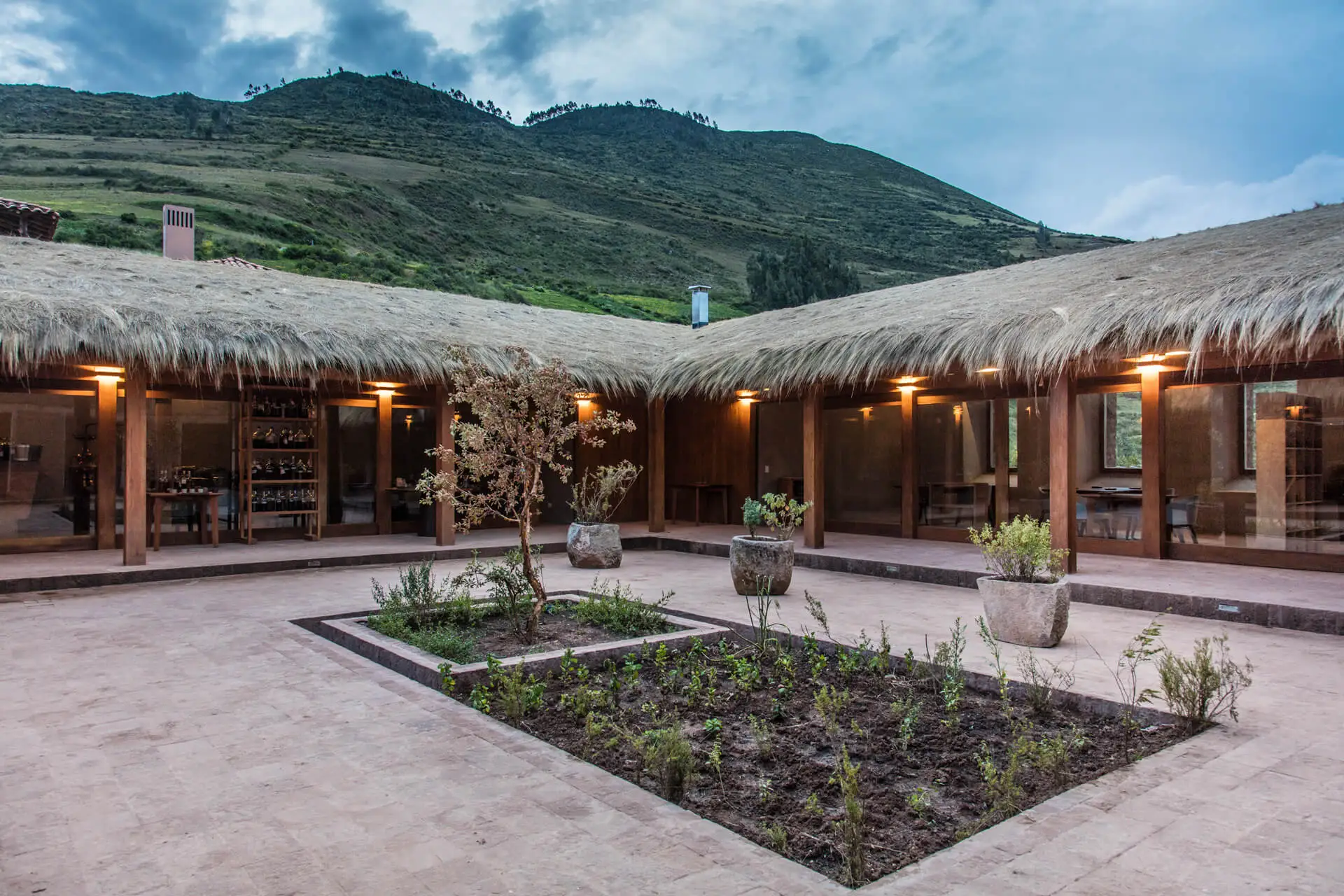
The interior courtyard separating the dining room and food lab. Photo by Mil Restaurant.
Besides the fact that Mil has been recognized as one of the best restaurants in the world, dining at Mil is more than just a meal; you will embark on an unparalleled culinary journey. Virgilio Martinez and Pia Leon designed the Mil Immersion, a holistic experience divided into six unique moments, each offering a unique and enchanting encounter with the Andean world. Let’s take a closer look at these moments that form the Mil Immersion:
Start the experience by visiting the Moray archaeological site. Thanks to Mil's close proximity to the impressive ruins of Moray, you will be able to enjoy a panoramic view of these concentric agricultural terraces from Inca times and get an insight into the Incas' innovative farming techniques. This part of the experience will allow you to gain a deeper understanding of the connection between the land, the people, and the gastronomy of the region.
Visit the Mullak'as-Misminay and Kacllaraccay communities, where guests will have the opportunity to witness the hard work and dedication of local farmers as they cultivate the land and harvest the ingredients that are used in Mil. It allows guests to truly appreciate the labor and passion behind each dish.
Embark on a hike on the Botanical Route in the hills surrounding the restaurant. Along the way, discover a varied range of plant species that are not only used for sustenance but also have medicinal properties. Guests will collect plant dyes, aromatics, roots, and wildflowers and deepen their understanding of the rich biodiversity of the Andean region.
Mater Projects is a space within Mil where the results of collaborations with artists, collectors, producers, and artisans are proudly displayed. This innovative blend of gastronomy and art emphasizes the significance of maintaining cultural heritage and empowering local craftspeople. Through this immersive experience, guests gain a greater appreciation for the craftsmanship and creativity that go into every aspect of Mil.
During the Ferments and Distillates portion of the experience, guests are introduced to a variety of beverages made with ingredients that reflect their cultural heritage and traditions. From traditional Andean chicha to artisanal distillates, guests can immerse themselves in the flavors and traditions of the Andean world and appreciate the rich heritage of Andean beverages and the stories they tell.
Finally, the culmination of the Mil Immersion is the Gastronomic Experience, a meticulously crafted eight-course menu that promises to take guests on an unparalleled culinary journey. This one-of-a-kind gastronomic journey is the finest example of the talent and creativity of Virgilio Martinez and Pia Leon. Guests can expect a work of art with each dish, which was inspired by the diverse landscapes and flavors of the Andean region and prepared with locally sourced ingredients. Let's take a look at some of the lesser-known ingredients in the different ecosystems (Preservation, Extreme Altitude, Corn, Central Andes, Andean Rainforest, Frozen Cordillera, and Sweet Huatia) to give you a better idea of what to expect.
Chuño: freeze-dried potatoes that are naturally preserved and traditionally made by the Quechua and Aymara communities of Bolivia and Peru. The flavor of chuño is neutral, faintly bitter, earthy, bland, and starchy, making it suitable for cooking.
Uchucuta sauce: a traditional Peruvian spicy sauce, usually made from rocoto chiles, grated cucumbers, peanuts, huacatay leaves, evaporated milk, chopped onions, coriander leaves, queso fresco, and salt.
Oxalis: a perennial herbaceous plant or tuber found in Peru that can be eaten both raw and cooked. Raw, they have a fresh lemony flavor with a crisp, crunchy texture similar to that of a carrot, and cooked, the tubers have a nuttier taste.
Kañiwa: a species of goosefoot and a “superfood” grain native to South America that has similar uses to the closely related quinoa. It has a slightly crunchy texture with a mildly sweet and delicious nutty flavor.
Cushuro: a blue-green alga that grows in lagoons, small ponds, reservoirs of fresh, clean water, wetlands, and other wet areas in the Andes mountains. It is also referred to as the caviar of the Andes and is traditionally used as a food source in the Andes of Peru due to the high amounts of beneficial nutrients. Due to its subtle taste, cushuro can easily absorb the flavors of the ingredients it is prepared with, making it a versatile addition to various dishes.
Black Quinoa: an Andean plant that originated around Lake Titicaca in Peru and Bolivia. The darkest and healthiest variety of quinoa is black quinoa, which is a whole grain and a good source of plant protein and fiber. It is also full of flavor and gluten-free. Black quinoa has a milder, earthier flavor than white quinoa and also tends to taste sweeter than white quinoa.
Ayrampo Fruit: a species of cactus with pink edible fruits similar to prickly pears, found in the south of Peru. The fruit is used in ice cream, juices, and infused drinks, among other food sorts, as well as to dye drinks, sweets, and fibers.
Piscoronto, Chullpi, and Urubamba Corn: Peru is a country that provides the world with diverse foods rich in flavor and high nutritional content, and corn is one of these foods. Its variety ranges from taste to color to texture, and its versatility and nutritional value make it one of the most sought-after products in the world, as it is the main ingredient in several dishes.
Fresh Cheese: known in Spanish as queso fresco, is a popular type of fresh cheese known for its mild, creamy flavor and soft, crumbly texture. This cheese is made from cow's milk and is a staple in many Peruvian households and traditional dishes. It is often used in salads, sandwiches, and as a topping for various dishes.
Potatoes: potatoes are not exactly a lesser-known food, but the title of "Potato Capital of the World" is often attributed to Peru, which is why we felt it was necessary to add potatoes to the list. Peru is home to over 4,000 varieties of native potatoes, which are grown in the Andean highlands of the country, and they come in every shape and color!
Chaco Clay: yes, we are talking about clay; you read that right! Chaco clay is high in calcium, iron, zinc, and copper and is typically served with various Andean tubers. It is also believed to make bitter potatoes more palatable. It has a smooth texture when mixed with water or other liquids, making it easier to consume, and the taste is often described as earthy and slightly chalky, with a mild, neutral flavor.
Tarwi: also known as chocho or Andean lupin, is an edible bean grown in the Andes of Peru. It is known for its high nutritional value, being rich in protein, healthy fats, and essential amino acids. The seeds of the tarwi plant resemble large, white beans and have a slightly nutty flavor.
Kallampa Mushroom: a species of wild mushroom found in the high-altitude regions of the Andes, particularly in Peru. It typically grows in pine forests and is known for its distinctive, earthy flavor and meaty texture. The mushroom is highly regarded in Andean cuisine for its nutritional value and culinary versatility.
Rocoto Pepper: similarly shaped, but not to be mistaken for the bell pepper, is the much-spicier rocoto pepper, a juicy, thick-fleshed pepper native to the Andean region, particularly Peru and Bolivia. Due to the high moisture level, they are usually baked and roasted to make salsas, or hollowed out and stuffed with beef and spices.
Kjolle: a bright orange Andean flower that grows at high altitude. Not only is it used to dye typical Andean textiles in vivid shades of yellow and tangerine, but the flowers are also known to have medicinal properties.
Muña: also known as "Andean mint" or "mountain mint," Muña is an herbaceous plant native to the Andean region of South America, particularly found in countries like Peru, Bolivia, Ecuador, and Colombia. Muña is known for its aromatic leaves, which have a minty fragrance and flavor similar to traditional mint but with a unique, slightly bitter undertone.
Mullaska: The word Mullaska refers to the young shoots or buds of the molle tree (Schinus molle), commonly known as the Peruvian pepper tree, which is native to the Andean region of South America. While the tree is known for its aromatic leaves and small red berries, which are sometimes used as a spice or flavoring, it is particularly valued for its young shoots, which have a mild, slightly peppery flavor and a tender texture, similar to asparagus or young bamboo shoots.
*Products and prices are subject to change without notice.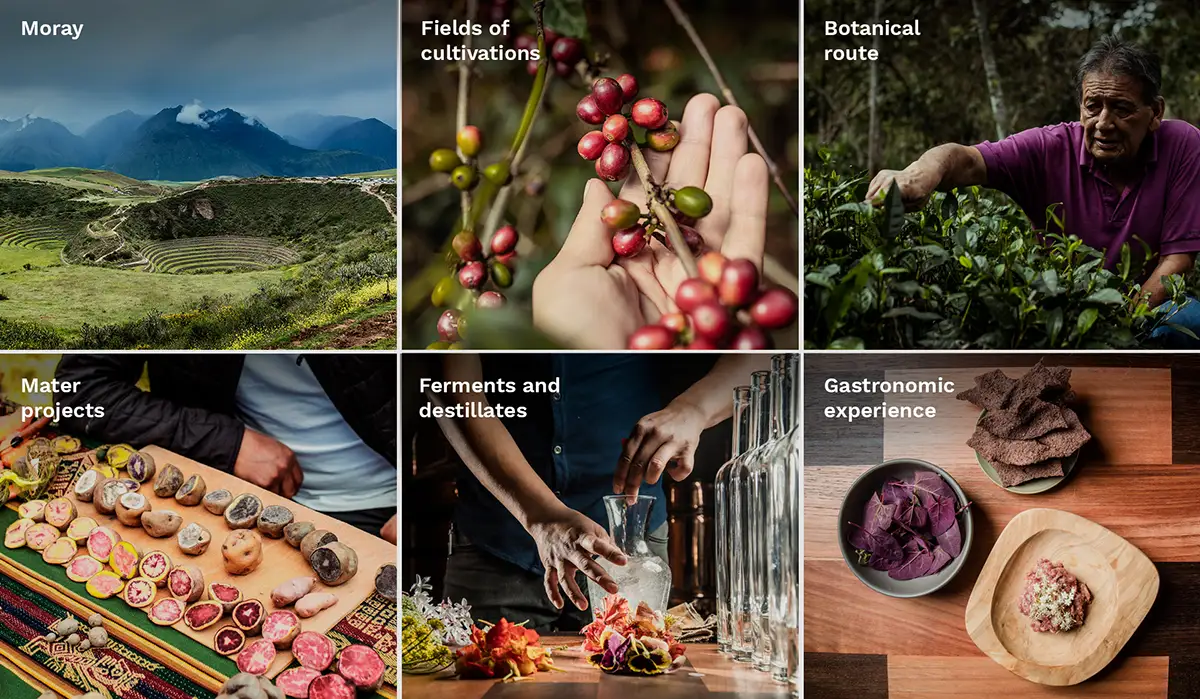
Photos by Mil restaurant.
If you would like to plan a whole customized trip around your visit to Mil Restaurant, you can submit a request to our team of expert Travel Advisors, who will help you plan everything from dinner reservations to ground and air transportation, tours, and hotels. You can also make reservations for Mil on their website or through the restaurant’s partners, like travel agencies and concierge services. Diners will choose their type of experience, number of people, date, time, and personal information.
Keep in mind that Mil is closed on Mondays as well as on major holidays, including some Latin American holidays such as Semana Santa.
*NOTE: Our clients are considered those who book 3+ days of hotels, tours, etc. through the company in addition to their Central reservation.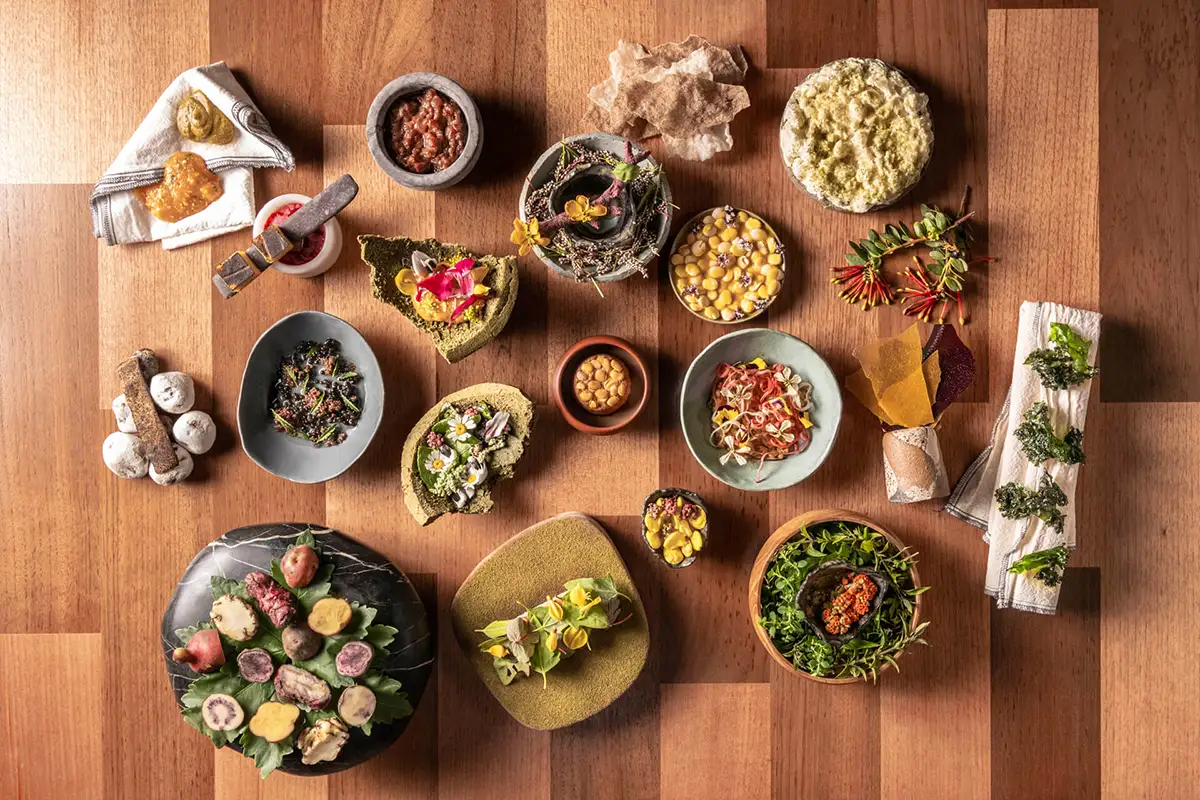
Some of the fascinating ingredients that you can expect during your experience at Mil. Photo by Mil Restaurant.
Reservations are required to dine at Mil. The easiest way to make a reservation is by letting one of our travel advisors take care of it. Alternatively, you can book directly on their website.
Vegetarian, vegan, and gluten-free tasting menus are available, but they need to be requested at the time of reservation. Also notify them if you have food allergies.
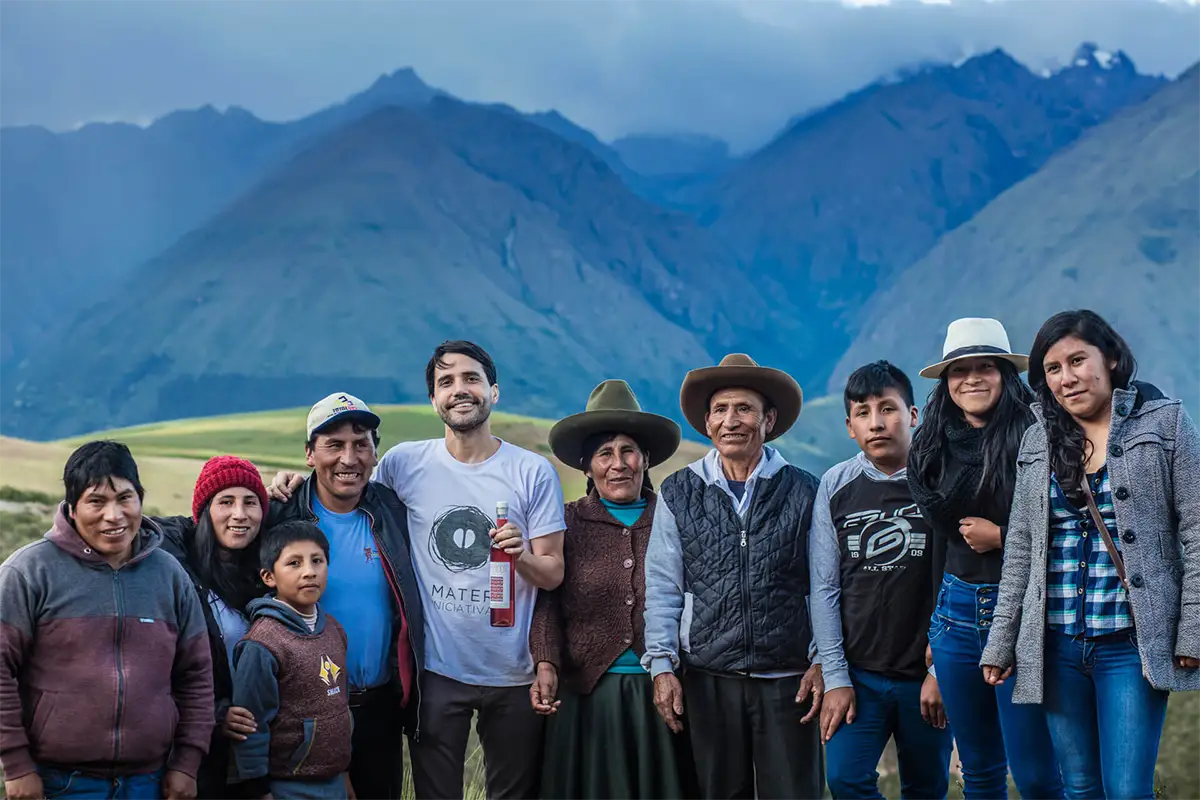
Virgilio Martínez with members of the local community. Photo by Mil Restaurant.
This is not an eat until you're full type of dining experience, nor is it the kind you want to wear a watch to; it's truly a once-in-a-lifetime gastronomy experience. Give yourself time to relax, appreciate the art of cuisine, and enjoy a pour-over coffee or hot tea before you leave with a satisfied but not overstuffed belly and a big, fat smile on your face. By now, you should know that Mil is absolutely worth visiting!

Dean is a South African animal lover, travel enthusiast, and writer. He worked as a safari guide in Kruger National Park for 27 years. Following his heart, he moved to Peru to be with his wife. Dean's passions include animals, tourism, writing, graphic design, and web development. In his free time, he enjoys movies, books, and spending time with friends and family.
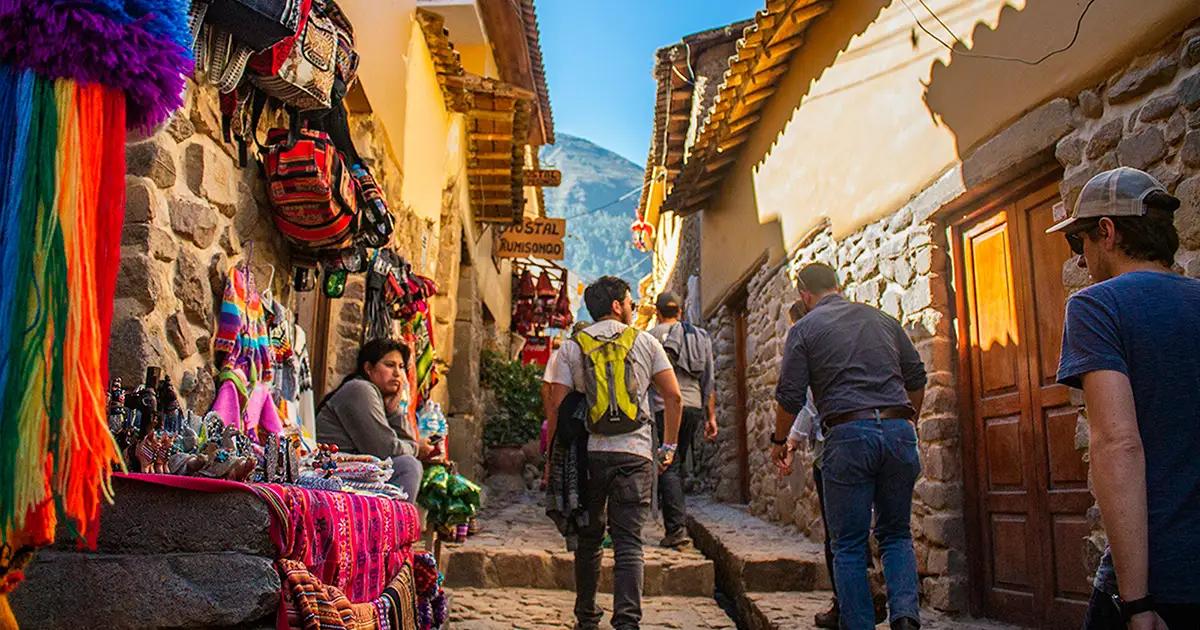
Discover the incredible things to do in Cusco, the historic heart of Peru. Once the capital of the Inca Empire, Cusco is now a treasure trove of Incan and colonial architecture, blended seamlessly with modern culture.

You won't find typical Peruvian food at the world's best restaurant, but rather a gastronomy experience like no other.